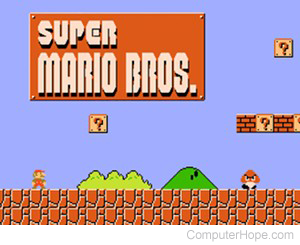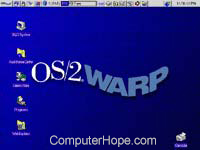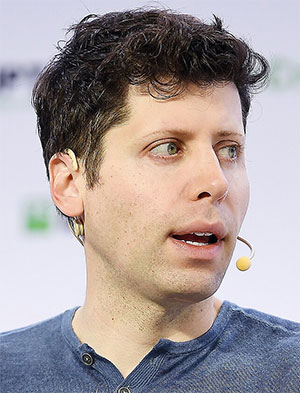Computer history - 1985
Major computer events in 1985
On January 4th at CES, Commodore introduced the Commodore 128 PC (personal computer) with 8502 processor, 128 kB of RAM (random-access memory), and ROM (read-only memory) cartridge port.
The first Internet domain name, symbolics.com, was registered by Symbolics, a Massachusetts computer company, on March 15, 1985. Earlier, the first domain nordu.net, was created (not registered) in January 1985 and served as the identifier for future domains, including Symbolics.
Microtek introduced the world's first 300-dpi black-and-white sheetfed scanner.
New computer products and services introduced in 1985
On January 4th at CES (Consumer Electronics Show), Atari introduced the Atari 130XE, 130ST, 260ST, 520ST, 65XE, 65XEM, and 65XEP computers.
Adobe PageMaker was released in 1985.
Apple released the LaserWriter printer for the Macintosh computer in 1985.
The Enterprise computer was released on June 23, 1985.
Atari released the Atari ST home computer in June 1985.
Microsoft released the first version of QuickBASIC on August 18, 1985.

Nintendo released Super Mario Bros. on September 13, 1985.
Microsoft released the first version, version 1 of Microsoft Excel, on the Apple Macintosh on September 30, 1985.
Microsoft released Word version 1 for the Mac in 1985.
Intel introduced the 80386 in October 1985.
Sega released the Sega Master System video game console in Japan in October 1985 and in North America in 1986.
The first C++ reference guide was published by Bjarne Stroustrup on October 14, 1985
The NES (Nintendo Entertainment System) was released in North America on October 18, 1985 by Nintendo.
Microsoft Windows 1.0 was introduced on November 20, 1985, and was initially sold for $100.00.
IBM introduced the Baby AT (advanced technology) motherboard form factor in 1985.
The Amiga, also known as the A1000, was introduced in 1985.
The first Gamepad was introduced by Nintendo in 1985.
IBM introduced NetBEUI and major elements of its Token Ring local area network for sharing computers, printers, files, and devices in a building or building complex. Token Ring architecture quickly became an industry standard for LANs (Local Area Networks).
IBM added two new processors: the IBM 3090 Models 200 and 400. A vector processing feature for the IBM 3090 enabled it to run many computation-intensive programs between 1.5 and 3 times faster than previously possible.
IBM released two low-cost desktop printers for the personal computer (the Proprinter, for high-speed impact printing, and the IBM Color Jetprinter for color charts, graphs, and text).
The IBM 7531 and 7532 Industrial Computers were introduced in 1985 to provide greater data processing power and flexibility for a broad spectrum of manufacturing uses.
IBM introduced the IBM 9003 industrial computer, designed to handle a wide variety of manufacturing and process control tasks
IBM released the IBM System/88, a fault tolerant computer system, to provide uninterrupted service to online terminal users in banking, retailing, manufacturing, and other industries.
IBM introduced the IBM 3833 and 3834 modems.
IBM released the IR/38, an advanced benchtop spectrometer developed and marketed by IBM Instruments, Inc.
IBM announced the IBM 9630 gas chromograph, a powerful analytical tool designed for use in the chemical, pharmaceutical, and food industries.
IBM released the IBM Actionwriter 1 Typewriter, the company's lowest-price electronic typewriter.
IBM introduced four new IBM Selectric System/200 typewriters - the IBM Wheelwriter System/20 and System/40 and the IBM Quietwriter System/20 and System/40 models - and the Quietwriter printer model 2, to provide added text processing and graphics flexibility.
IBM VSE/SP version 2 was released in 1985.
Dell released its first computer, the "Turbo PC," in 1985.
CAT1 wiring was introduced in 1985.
CDS/ISIS, a software package for information storage and retrieval systems, was released in 1985.
The MIPS (microprocessor without interlocked pipelined stages) microprocessor architecture was introduced in 1985.
Paul Brainerd of Aldus Corporation introduced Pagemaker for the Macintosh, a program that lets users mix type and graphics on the same page. The combination of this software and the new Apple LaserWriter laser printer helped create the desktop publishing field.
The C and E symbol was first used in 1985 as an abbreviation of Conformité Européenne. It's shown on any product meant to be sold in the EEA (European Economic Area) since 1985 and complies with EU legislation.
Computer and technology-related events in 1985
On January 20, 1985, during Super Bowl XIX, Apple debuted its lemmings commercial to help promote The Macintosh Office. The commercial ended up being a failure as most felt it insulted the users.
GEM (Graphics Environment Manager) a GUI (graphical user interface) for early Atari ST computers was released by Digital Research on February 28, 1985.
Steve Jobs quit Apple on September 16, 1985.
Richard Stallman created the Free Software Foundation in October 1985.
FTP (file transfer protocol) was defined in RFC 959 in October 1985.
In the December 8, 1985, New York Times, an article was published by Erik Sandberg-Diment, who stated the average user would never want a laptop.
Department of Defense security evaluations (5200.28-STD) or Orange Book was published in December 1985.
Software Arts assets were sold to Lotus. Software Arts was most well known for its VisiCalc program.
Calcomp Graphic Solutions LLC was founded in 1985.
The GNU (GNU's Not Unix) manifesto was published by Dr. Dobb's Journal in 1985.

Microsoft and IBM began collaboration on the next-generation operating system (OS/2) in 1985.
The Mach Project began at Carnegie Mellon University in 1985.
Mary Buckles wrote the first academic paper on video game aesthetics in 1985.
The concept of NTP (Network Time Protocol) was developed by David Mills around 1985.
U.S. President Ronald Reagan awarded the National Medal of Science to Herman Goldstine, and the National Technology Medal to Erich Bloch, Frederick Brooks, and Bob Evans.
FCC (Federal Communications Commission) allowed for unlicensed use of spread spectrum communications starting in 1985.
Computer companies and organizations founded in 1985
The WELL was founded in February 1985 by Stewart Brand and Larry Brilliant.
The computer company Gateway 2000 was founded in Sioux City, Iowa, on September 5, 1985.
Adtran was founded in 1985.
Alliance Semiconductor was founded in 1985.
AMI was established in 1985 by S. Shankar.
Quantum Computer Services was founded in 1985, becoming AOL (America Online).
ATI was founded in 1985.
Boca was established in 1985.
Corel was founded in 1985.
Digi was founded in 1985.
DriveSavers was founded in 1985.
Exabyte was founded in 1985.
Fujitsu ICL was founded in 1985.
Gravis was founded in 1985.
Medion was founded in 1985.
NeXT was founded in 1985.
Novalogic was founded in 1985.
Ontrack was founded in 1985.
PNY Technologies was founded in 1985.
Qualcomm was founded in 1985.
Repotec was founded in 1985.
SIIG was founded in 1985.
Sophos was founded in 1985.
Soyo was founded in 1985.
StarTech Computer Accessories was founded in 1985.
Systemax was founded in 1985.
Titus Interactive was founded in 1985.
Turtle Beach Systems was founded in 1985.
VideoLogic was founded in 1985.
Westwood Studios was founded in 1985.
Discontinued products and services in 1985
Microsoft abandoned Multiplan in 1985 when it released Microsoft Excel, a graphical user interface spreadsheet program.
Computer pioneers born in 1985

Sam Altman was born on April 22, 1985.
Blake Ross was born on June 12, 1985.
Pete Cashmore was born on September 18, 1985.
Arash Ferdowsi was born on October 7, 1985.
Aaron Levie was born on December 27, 1985.
Michael Calce was born in 1985.
Ross Ulbricht was born in 1985.
Computer pioneer deaths in 1985
Charles Hamblin passed away on May 14, 1985 (Age: 63).
Philip Estridge passed away on August 2, 1985 (Age: 48).
